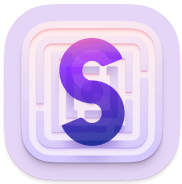Tip Tuesday #4 – Using notes effectively
Not sure where to store your passport, drivers license or phishing license in Secrets? Whatch the following tip to learn how to use Markdown in notes to store any structured information.
If you want to follow along be sure to subscribe on YouTube.
Welcome to another Tip Tuesday. On this episode, I'm addressing a
common question about where to store information that doesn't fit on
the existing item types or fields. So where should you store your passport
information or your driver's license? These are common questions I get,
especially from users coming from other password managers, that have these
item types or support custom fields. Secrets works a bit differently. Your passport, driver's license, phishing
license, and so on, are just generic data. And it's pretty much impossible
to have a template for everything you may want to store. Secrets embraces that and uses
Notes as a catch all solution. Notes are easier to
grasp and very flexible. Let me show you how I would store
my national ID card in Secrets. I already have a new note created
here, and I'm going to enter my national ID information. Now I'm going to use a bit
of Markdown to format it. I'll make the values bold by surrounding
them with a double asterisk, and I'm going to make this URL a clickable link. Finally, I'll also make the number
a monospaced font, as it helps distinguish between numbers and letters. Done. This is looking great, but
the pins are still visible. I'd rather have the masked to
prevent any shoulder surfing. Secrets extends the Markdown syntax
to allow you to do just that. Okay, let's edit this node
to conceal these pins. The syntax is similar to making
a Markdown link, but you need to prefix it with a caret symbol. Then, instead of typing in a URL,
you would type concealed colon true. Done. Now the pins are masked. To see them, just click on them. And using markdown isn't
constrained to the notes item type. You can use it in the notes
field for all other items. Here's a credit card where I've
added my phone authentication pin and a clickable link to the
bank's card cancellation services. If my card ever gets stolen or lost, I
can just click on it to make the call. Let me show you how you can do the same. If I edit this item, you can see I'm
using a special tel scheme for the URL. Both macOS and iOS know how to
handle this automatically and know it means to perform a call. Finally, if you are wondering
how you are going to remember all of this, don't worry. It's all documented on Secret's website. Just open Secret's support page, search
for Markdown, and you'll find all the supported syntax mentioned there. That's it for this tip. Thank you for watching. See you next time.
